Set in a Tiffany & Co. necklace, it sold for $4.2 million, the highest price and price per carat paid for a Paraíba tourmaline at auction.
Why Omnichannel Retail is Key to Success in 2017
According to Fitch Ratings and the Harvard Business Review, a combination of online and in-store sales will make all the difference in the year ahead.

New York--Analysts agree that an omnichannel approach to retail is integral to success in 2017.
According to global credit rating and research firm Fitch Ratings, U.S. retail sales, excluding automobiles and gasoline, will increase 3 to 4 percent this year, with more than half of that growth concentrated online and about 1 percent of it relegated to in-store sales.
David Silverman, Senior Director, U.S. Corporates at Fitch Group, explained in the 2017 outlook report, “Spending focus on services and experiences appears here to stay, so the dividing line between best-in-class retailers and market share donors is increasingly going to be determined by which retailers can cater to the evolving landscape.”
He continued, “Those that find success have invested in the omnichannel model and have differentiated their products and customer service to draw customers in.”
A recent Harvard Business Review (HBR) study shed similar light on the importance of omnichannel retail.
The HBR tracked 46,000 consumers who made a purchase between the 14-month period of June 2015 and August 2016.
Of the participants, 73 percent were omnichannel customers who shopped both in-store and online, while 20 percent shopped only in-store and 7 percent only online.
The study found that the omnichannel customers were using multiple technological tools provided by retailers, referred to as touchpoints.
Examples of different touchpoints include ordering a product online and picking it up in a store, using a smartphone app to pull up a coupon, or even utilizing in-store tools like interactive catalogs, price-checkers and tablets.
The HBR categorized each of these various touchpoints as separate retail channels.
They concluded that the more channels a customer used, the more they were spending. On average, consumers spent 4 percent more in store and 10 percent more online if they had interacted with multiple channels as opposed to a single channel (only making a purchase online or only making a purchase in-store).
Customers that used four or more channels before making a purchase spent an average of 9 percent more in a store.
“Spending focus on services and experiences appears here to stay, so the dividing line between best-in-class retailers and market share donors is increasingly going to be determined by which retailers can cater to the evolving landscape.”--David Silverman, Fitch Group
The study also showed that rather than perusing merchandise in a store and buying online, it was more common for consumers to compare product online
If customers had conducted online research, whether at a retailer’s website or other websites, prior to a purchase, they typically spent 13 percent more in store.
Retailers See Success
Dallas, Texas-based fine jeweler Ylang 23 opened up shop in 1985 and was an early e-commerce convert, adding their online store to their website in 2001.
Ylang 23 had always taken a multi-channel approach to business, building up store traffic in the 1980s and 1990s through direct mail advertising. Now, the store feels so strongly about their online business that they carry the exact same merchandise online and in-store.
“More often than not, customers will come in having already done a large chunk of pre-shopping online or through our social channels, particularly our Instagram,” Vice President of Business Development Alysa Teichman said.
“We are really finding that our store strengthens our online business and vice versa. It’s nice to have a platform where our customers can shop in their pajamas at home and then get that touch point and excellent customer service we’re known for in-store.”
Harold Stevens Jewelers, located in San Diego, California, opened for business in 1979 and added an online e-commerce site in 2015.
Ryan Krasner, the store’s creative director, emphasized that the site is “still in its infancy,” and only accounts for about 5 percent of total sales, though Krasner is “pursuing different avenues to improve online transactions.”
However, like Ylang 23, many of Harold Stevens Jewelers’ clients have perused the website before coming in to shop.
“In the local market,” he explained, “mainly people are on the website, then come in to physically handle the product and experience it in person.”
Social media channels like Instagram, to which Harold Stevens Jewelers pays special attention, given the visual nature of the platform, also play a big part in drawing in foot traffic.
“(Customers) check out all channels if they’re interested,” Krasner said.
Even some new retailers that began as e-commerce-only businesses are embracing the omnichannel approach.
Goldyn, a store that sells women’s and men’s apparel plus fine jewelry by brands like Communion by Joy and Selin Kent, is a product of the digital age. The store launched in 2007 as an online-only retailer.
“Fine jewelry is particularly important to our online business because there aren’t the issues with fit and feel that you have with apparel,” said Vanessa Barcus, Goldyn’s owner. “I find that customers are not reluctant to buy fine jewelry online, especially if they are already familiar with the designer.”
Barcus had always hoped to have a physical retail space as well, and waited out the first few post-2008 recession years before opening her Denver, Colorado, store in 2011.
“I’d say it’s quite important to have both an online store and brick-and-mortar shop,” Barcus said. “The two really support each other. Especially with fine jewelry purchases, I find that customers have done a lot of research online and have already perused our website before stopping in. Even if the purchase is not made online, having the products there allows the customers to think about the purchase, which can help make the sale for us.
“Or, vice versa, if a customer comes in and sees something they like in the shop, but it’s a bigger purchase and they want to think about it more, our website allows them to purchase it at a later date.”
Barcus said that “a significant volume of overall sales, particularly fine jewelry sales,” are made online.
Like Goldyn, Ylang 23 relies on the synergy between e-commerce and their physical store to keep their customers’ attention in a changing retail landscape.
But even with more focus than ever on all manner of online and digital sales, Ylang 23 is not neglecting their very first retail channel.
“Eventually, we’d like to add other physical retail locations,” Teichman said. “We believe in brick-and-mortar stores. The direct, customer-facing, customer service aspect is just so important to us.”
The Latest

The jeweler’s “Deep Freeze” display showcases its iconic jewelry designs frozen in a vintage icebox.

Take luxury gifting to new heights this holiday season with the jeweler’s showstopping 12-carat sphene ring.

How Jewelers of America’s 20 Under 40 are leading to ensure a brighter future for the jewelry industry.

This year's theme is “Unveiling the Depths of the Ocean.”


In its annual report, Pinterest noted an increase in searches for brooches, heirloom jewelry, and ‘80s luxury.

Starting Jan. 1, customers can request the service for opal, peridot, and demantoid garnet.

Roseco’s 704-page catalog showcases new lab-grown diamonds, findings, tools & more—available in print or interactive digital editions.

The 111-year-old retailer celebrated the opening of its new location in Salem, New Hampshire, which is its third store in the state.
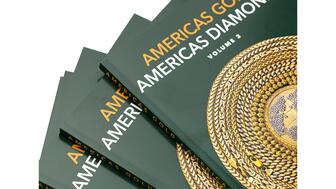
The new catalog features its most popular chains as well as new styles.
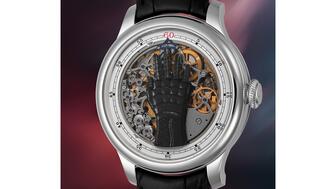
The filmmaker’s personal F.P. Journe “FFC” prototype was the star of Phillips’ recent record-setting watch auction in New York.

The new location in the Design District pays homage to Miami’s Art Deco heritage and its connection to the ocean.

“Longtime favorite” presenters, as well as first-time speakers, will lead talks and workshops at the annual event in Tucson next year.
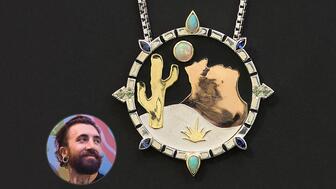
Silas Smith of Meridian Metalworks won the challenge with his pendant that blends Australian and American landscapes.

The sale of the 31.68-carat, sunset-hued stone was part of Sotheby’s first series of events and auctions in Abu Dhabi.

Most customers who walk into your store this month have made up their minds. Your job is to validate their choice, Emmanuel Raheb writes.

The collection features characters and motifs from Ukrainian folklore, including an enchanted mirror and a magic egg.

MatrixGold 3.11, the newest version of the jewelry design program, offers more flexibility, precision, and creative control.

The pavilion will be part of the 2026 JA New York Spring show, scheduled for March 15 to 17.

Kadet, a 1994 National Jeweler Retailer Hall of Fame inductee, helped grow the family-owned retailer in the Chicago area and beyond.

Billed as the world’s smallest wearable, Lumia Health’s new smart earrings have a health tracker subtly embedded in the back.
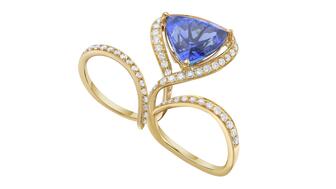
Don’t let those with December birthdays feel blue. Help them celebrate their month with blue zircon, turquoise, and tanzanite.

The new pink sapphire version of the piece dances with its wearer in the brand’s “Icons After Dark” holiday campaign.

A choice that’s generated a lot of commentary, Pantone says “Cloud Dancer” marks a fresh start and encourages relaxation and creativity.
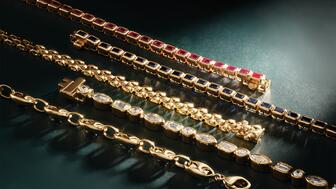
The manufacturer’s holiday campaign features a gift guide filled with trending designs and jewelry that can be personalized.
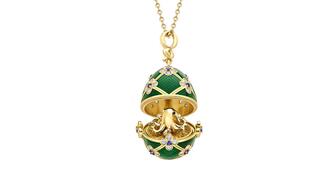
The man was charged with theft, accused of ingesting the necklace while in a jewelry store in Auckland, New Zealand.

The Florida independent expanded its store from 8,000 to 14,000 square feet, fulfilling the vision of its late co-founder, Jim Dunn.



























